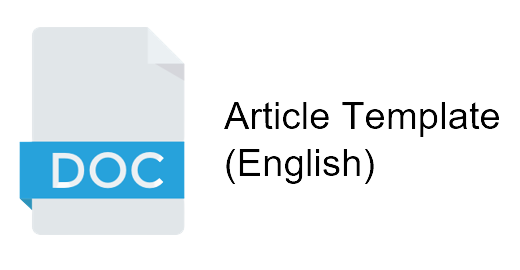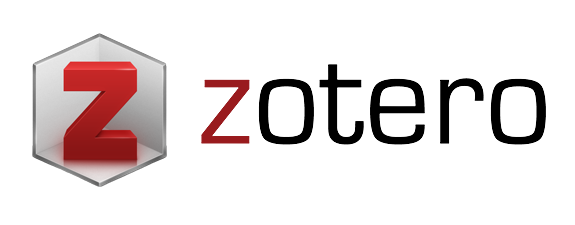Online Submissions
Already have a Username/Password for Khazanah: Jurnal Pengembangan Kearsipan?
Go to Login
Need a Username/Password?
Go to Registration
Registration and login are required to submit items online and to check the status of current submissions.
Author Guidelines
- Articles have never been published in other media and do not contain plagiarism.
- Articles can contain research results, studies and conceptual and theoretical applications, literature studies, laboratory experiments, seminar results and case reports in the field of records and archives. Articles can be written in Indonesian or English for 15-25 pages including bibliography, photos, figures/diagrams and tables, on A4 paper with top and left margins of 4 cm, bottom and right margins of 3 cm. Articles are written using Times New Roman font, 12pt, and 1.5 spacing.
- The article contains the author's name, if the article is the result of group writing, the order of the author's name must be based on the agreement of all authors. Author's name in bold and using Times New Roman font, 12pt.
- Articles must be accompanied by the author's address including: Name of the author's institution of origin and email address. Write the address for the author of the article using Times New Roman, 12pt font size.
- Articles must be accompanied by an INTISARI in Indonesian and an ABSTRACT in English with a maximum number of 200 words in one paragraph, using Times New Roman 12pt font size, 1 space. Write the word ABSTRACT using capital letters, Times New Roman 12 font size, bold and italic for English. INTISARI and ABSTRACT must be accompanied by Kata Kunci and Keywords each consisting of 3-5 words arranged alphabetically with 1 space. Writing Kata Kunci use capital letters at the beginning of words, Times New Roman, 12pt font size, and bold. For the word Keywords, it is written using capital letters at the beginning of the word, Times New Roman, font size 12pt, bold and italic.
- The article consists of PENDAHULUAN (INTRODUCTION), METODE (METHOD), PEMBAHASAN (DISCUSSION), and SIMPULAN (CONCLUSION).
- INTRODUCTION. Contains the context of records management and archives management issues being studied. The introduction also contains relevant theory related to records management and archives management practice. In addition, the introduction contains a discussion of previous studies, best practices, and challenges in records management and archives management. The author identifies and clearly describes gaps or areas that require further research.
The introduction is written in Times New Roman font, size 12 with 1.5 spacing. The minimum number of pages in a paper is 15 pages, including tables/figures and bibliography. The maximum number of pages is 25 pages. The title of INTRODUCTION is written in Times New Roman capital letters, font size 12 and bold with Heading 1. - METHOD. The method contains a description of the research design, approach, and methodology used. The author describes the methods of data collection (eg surveys, interviews, case studies, observations), as well as details about the study participants or sample. Next, the authors explain the data analysis techniques used in this study. Written in Times New Roman font, font size 12 and 1.5 spacing.
- DISCUSSION. The author presents the findings based on the data collected and analyzed. Authors may use tables, figures, charts, graphs, or other visual aids to illustrate key points. The maximum number of visual aids is six pieces (a combination of tables, pictures, and others).
The author interprets the results and their implications for records management and archives management practices to further compare the findings with the existing literature. The author explains about how the research results can overcome research objectives or hypotheses. Next the authors consider the limitations of the study and potential sources of bias. Written in Times New Roman font, font size 12 and 1.5 spacing. - CONCLUSION. The conclusion is a summary of the main findings and their significance. The author includes practical implications and recommendations for records management and archives management professionals. Conclusions are typed in Times New Roman font, font size 12 with 1.5 spacing and conclusions and suggestions merge (not stand alone).
- List all sources cited in the article, following the APA 7th citation style and mandatory use of a reference management such as Mendeley or Zotero. All sources of library materials or references in the manuscript must be listed in the bibliography. Instead, all library materials or references listed in the bibliography must be written in the manuscript. The bibliography is composed of books and journals (written alphabetically by author), legal products are written based on the highest legal product position, library materials are internet sources, and sources from records and archives.
Example for in-text citation (Author, 2014: 12). - If the research is supported by certain funding, author is allowed to add acknowledgment in the article text.
Submission Preparation Checklist
As part of the submission process, authors are required to check off their submission's compliance with all of the following items, and submissions may be returned to authors that do not adhere to these guidelines.
- The manuscript is not the result of any form of plagiarism.
The manuscript has never been published before or is in the process of being reviewed in another journal.
- Manuscripts uploaded are in OpenOffice, Microsoft Word, or RTF document formats.
- Using a reference management application (Mendeley or Zotero) and including the URLs used as reference materials
- The manuscript has adapted to the guidelines and templates set by the Editor in the Author Guidelines, which can be accessed on the About the Journal page.
- Has carried out the Ensuring a Blind Review procedure to ensure the review process is running as it should.
- Has completed the information in the profile such as an active telephone number and email to facilitate communication with the Editor
- Once the articel is accepted and published by Khazanah: Jurnal Pengembangan Kearsipan, author(s) agree to transfer the copyright to this journal under the license of Creative Commons Attribution-ShareAlike 4.0 International License.
Copyright Notice
Starting from Vol 16(2), 2023 onward, Khazanah: Jurnal Pengembangan Kearsipan applies the copyright and licence rules as follows: Articles published in Khazanah: Jurnal Pengembangan Kearsipan are licensed under a Creative Commons Attribution-ShareAlike 4.0 International (CC BY-SA 4.0) license which the copyright is held by the Khazanah: Jurnal Pengembangan Kearsipan. This means anyone can copy, transform, or redistribute articles for any lawful purpose in any medium, provided they give appropriate credit to the original author(s) and Khazanah: Jurnal Pengembangan Kearsipan, link to the license, indicate if changes were made, and redistribute any derivative work under the same license.
Any submission to Khazanah: Jurnal Pengembangan Kearsipan will be taken to mean all authors associated with the manuscript agree to these conditions.

Privacy Statement
The names and email addresses entered in this journal site will be used exclusively for the stated purposes of this journal and will not be made available for any other purpose or to any other party.
Author Fees
This journal charges the following author fees.
Article Submission: 0.00 (IDR)
Authors are not required to pay any Article Submission Fee upon the submission process.
Article Publication: 0.00 (IDR)
If the paper is accepted for publication, authors will not be asked to pay any Article Publication Fee to cover publications costs.
This journal also does not offer a fast-track review service at any cost. All submitted articles are reviewed in accordance with their submission date. None of the submissions is processed with special treatment.







